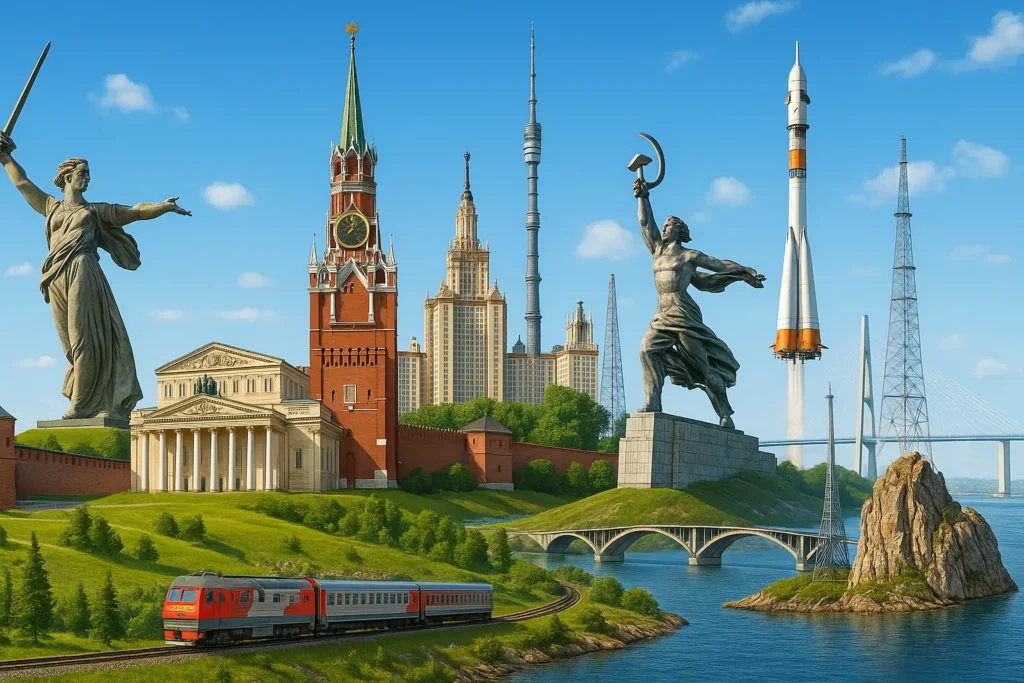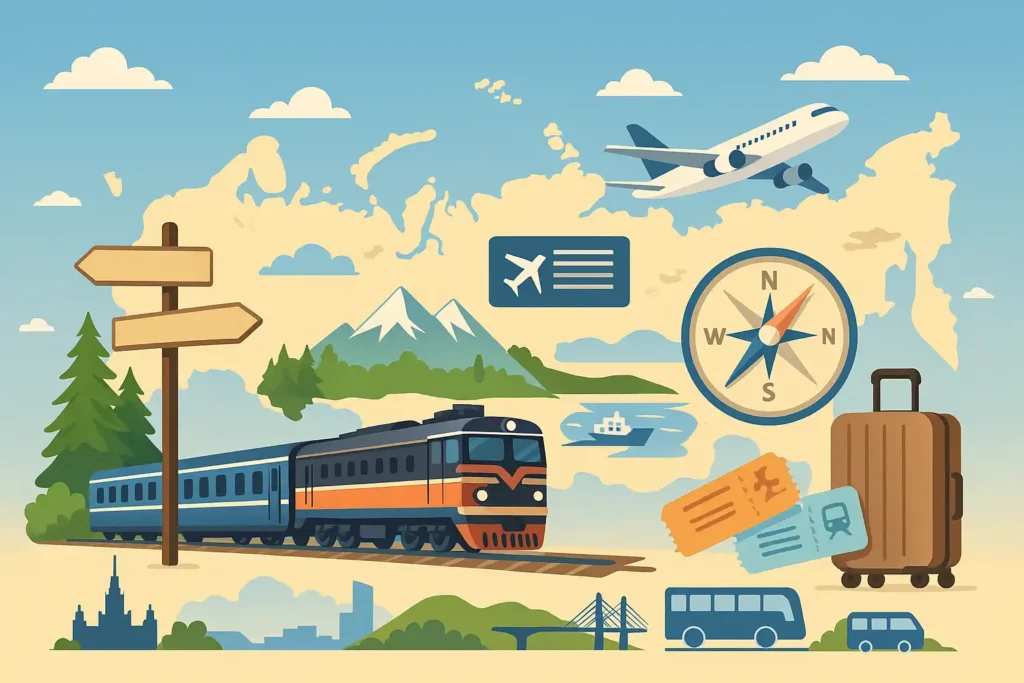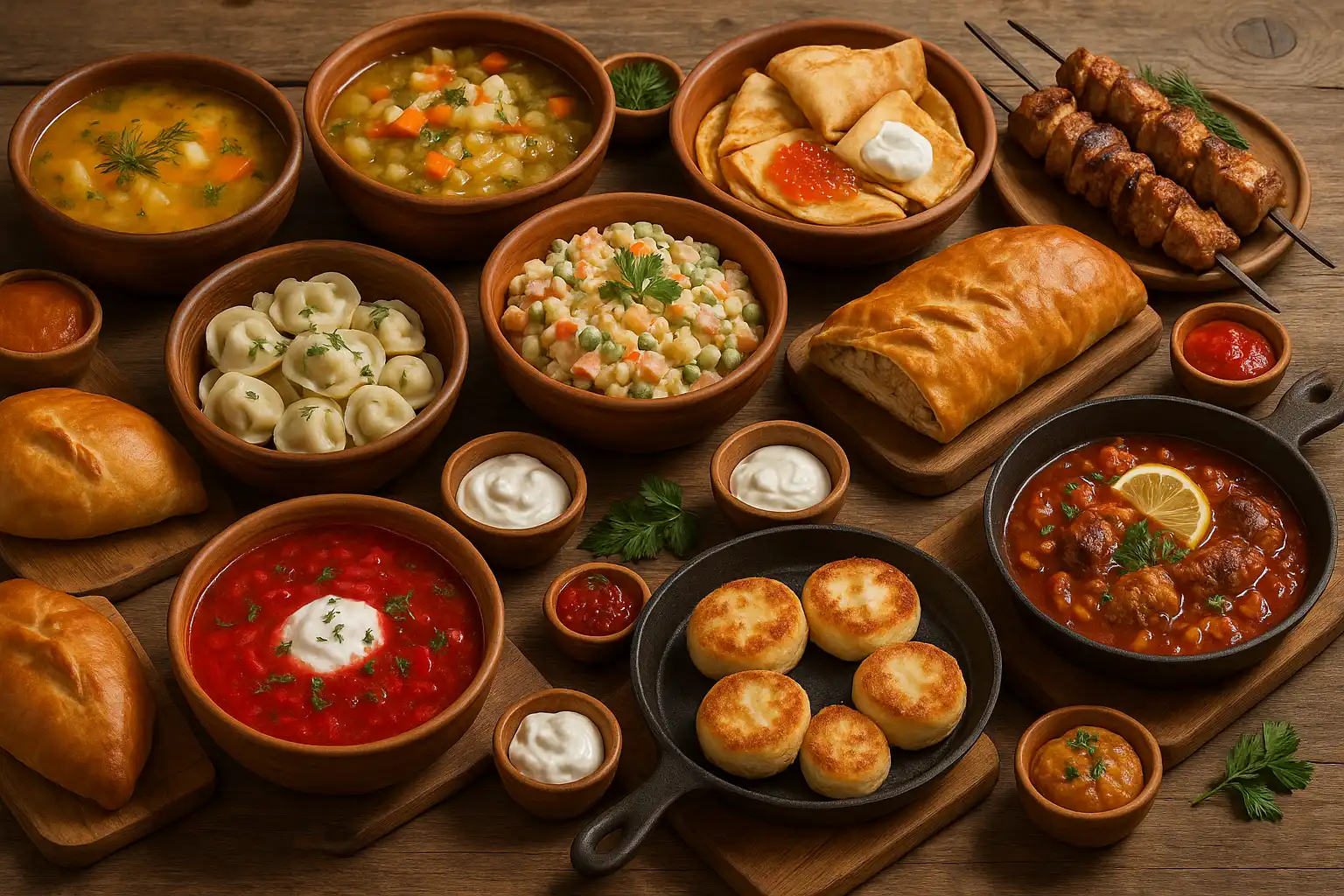Russia is filled with iconic landmarks, cultural treasures, and natural wonders that make it one of the most diverse travel destinations in the world. The challenge for travelers is not what to see, but how to choose among the endless possibilities. From world-famous cities to remote wilderness, these highlights provide a foundation for any journey through Russia.
Moscow: heart of Russian history and power
Moscow, the capital, blends centuries of tradition with modern dynamism. At its core stands the Kremlin, a UNESCO World Heritage Site, surrounded by cathedrals, museums, and government buildings. Red Square, with its cobblestones and grand scale, hosts the colorful St. Basil’s Cathedral, Lenin’s Mausoleum, and the State Historical Museum.
Beyond the historic center, the Moscow Metro impresses visitors with its palatial design, while the Tretyakov Gallery offers masterpieces of Russian art. Modern districts such as Moscow City display skyscrapers that contrast with golden domes and neoclassical avenues.
St. Petersburg: the cultural capital
St. Petersburg enchants travelers with its imperial elegance and artistic heritage. The Winter Palace and Hermitage Museum hold one of the world’s most important art collections, while the Mariinsky Theatre continues traditions of ballet and opera. The city’s canals and bridges have earned it the nickname “Venice of the North.”
One of the most magical experiences is the White Nights Festival in June, when twilight lasts throughout the night and the city hosts concerts, ballet, and fireworks. Architectural gems like the Peter and Paul Fortress, the Catherine Palace in Tsarskoye Selo, and Peterhof’s fountains make St. Petersburg a true highlight of European and Russian culture.
The Golden Ring: medieval Russia preserved
Just northeast of Moscow, the Golden Ring unites a series of historic towns such as Suzdal, Vladimir, and Yaroslavl. These towns preserve medieval churches, monasteries, and kremlins, offering a glimpse into the roots of Russian civilization. Wooden houses, onion-domed cathedrals, and quiet riverbanks create an atmosphere far removed from urban life.
Travelers exploring the Golden Ring often remark on the slower pace, the hospitality of local families, and the chance to see how traditions have survived modern times.
Lake Baikal: the jewel of Siberia
Known as the world’s deepest and oldest freshwater lake, Lake Baikal is a UNESCO World Heritage Site and a sacred place for the Buryat people. Its crystal-clear waters stretch over 600 kilometers, surrounded by mountains, taiga forests, and small villages.
In summer, visitors hike, swim, and explore the lake by boat, while in winter, Baikal freezes into vast sheets of ice, offering unique opportunities for dog-sledding, ice skating, and photography. Wildlife enthusiasts may spot the Baikal seal, an endemic species found nowhere else in the world.
The Trans-Siberian Railway: an epic journey
For those who dream of crossing continents, the Trans-Siberian Railway is a once-in-a-lifetime adventure. Running from Moscow to Vladivostok, it takes about seven days without stops, but most travelers hop off to explore cities such as Yekaterinburg, Irkutsk, and Novosibirsk.
The journey reveals the immensity of Russia: forests stretching endlessly, rivers winding through plains, and encounters with locals sharing food and stories on the train. It is both transportation and cultural immersion, connecting Europe and Asia through landscapes and human connections.
Kamchatka: volcanoes and wilderness
Few regions capture the raw beauty of Russia like Kamchatka, located in the Far East. This peninsula is home to active volcanoes, geysers, hot springs, and abundant wildlife. Bears fishing for salmon in rushing rivers are a common sight, while helicopter tours reveal smoking craters and lava fields.
For adventurous travelers, Kamchatka is unmatched. Hiking, rafting, and eco-tours bring visitors close to one of the most untouched natural environments on Earth.
The Caucasus: mountains and cultural crossroads
Southern Russia offers another dimension, with the Caucasus Mountains providing alpine landscapes, skiing resorts like Krasnaya Polyana near Sochi, and rich cultural diversity. The region is known for its hospitality, traditional cuisine, and a mix of Orthodox, Islamic, and local traditions.
Travelers find that the Caucasus combines breathtaking scenery with human warmth, making it a rewarding addition to a Russian itinerary.
Sochi and the Black Sea coast
For those seeking a warmer climate, Sochi and the Black Sea coast provide beaches, promenades, and subtropical vegetation. The city became internationally recognized after hosting the 2014 Winter Olympics, and it now combines seaside relaxation with access to mountain sports. Palm trees, modern resorts, and lively nightlife make it a favorite among domestic and international tourists.


